
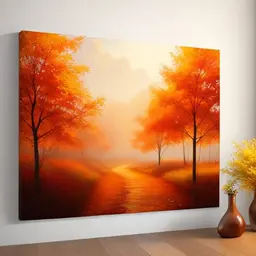
High-quality wall art, by definition, revolves around the superior craftsmanship of unique products that possess a distinct aesthetic appeal, cultural authenticity, or historical significance. These are pieces made from top-notch materials, meticulously crafted by seasoned artists, or as high-precision reproductions of renowned artworks. The 'high quality' aspect not only embodies the art's physical form and condition, but it also encapsulates the concept, style, and creative execution that prompts an emotional connection, discourse, or thought provoking reaction within the viewer.
Wall art plays an integral role in interior design as it helps breathe life, character, and personality into a space. It serves as a focal point around which other elements of a room can be arranged or balanced. Often, the presence or absence of wall art can make or break the aesthetic appeal of a room. Moreover, it allows homeowners to convey their tastes, preferences, and sometimes their ideologies, without having to use words. Aside from its decorative role, it can also serve practical purposes such as hiding a room’s architectural flaws, or creating an illusion of space within smaller rooms.
The ambiance of a room is largely influenced by its wall art. It can dictate the mood and add depth to the room's aesthetic experience. Brightly colored wall art can induce a cheerful atmosphere and energy, while monochromatic or minimalistic artworks can create a sense of calm and tranquility. Moreover, wall art can establish a sense of cohesion between disparate elements within a room or provide a striking contrast. It, therefore, has the potential to significantly enhance or transform the vibe of a space almost instantly.
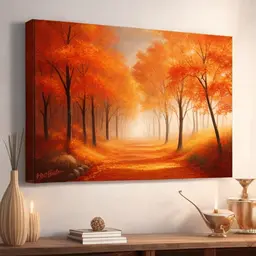
Wall art, a testament to human creativity, traces its roots back to the dawn of civilizations. From the Stone Age's cave paintings to the intricate mosaics of the Romans and Greeks, wall art has held a significant role in both public and private spaces. With the Renaissance, the idea of art as an autonomous aesthetic endeavor came into being, and the introduction of perspective opened new dimensions to wall art in the form of murals and frescoes, enhancing the beauty and grandeur of palaces and churches.
The 19th century saw the advent of photography which revolutionized the art scene, dropping painting from its pedestal as the only medium of realistic depiction. Interior design in the 20th century cherished the concept of modernism, favoring functionality, simplicity, and the borders between art and design blurred, with wall art becoming an integral part of spatial aesthetics.
Numerous techniques, styles, and mediums evolved over the centuries with society's changing needs and tastes. Beginning with crude tools and natural pigments in prehistoric times, to the refinement of brushes, paints, and carving tools during Classical Antiquity and Medieval period, techniques have consistently evolved.
The mediums widened from paint on stone to include wood, canvas, metal, and even digital screens. Styles morphed dramatically too, from the intense realism of the ancient Greeks and Romans to abstract and surreal works of modern times, showcasing the variety of human creativity.
The legacy of wall art can be observed in the historical monuments and artworks around the globe. The Lascaux Caves in France showcase the early human interaction with wall art through its vibrant cave paintings. Marvelous frescoes adorning the walls of Pompeii, reveal the Roman's way of life.
Michelangelo's 'Creation of Adam' in the Sistine Chapel and the grand paintings in Versailles Palace gives us the glimpse of the opulence of the Renaissance and Baroque eras. Diego Rivera's modern murals on Mexican government buildings reflect social and political themes. The East Side Gallery, as a fragment of the Berlin Wall, stands as an outdoor gallery exhibiting the union of wall art and history.
In today's contemporary homes, the use of high-quality wall art ranging from photographic prints, oil paintings to digital art installations connects individuals to this rich lineage and allows for personal expression.
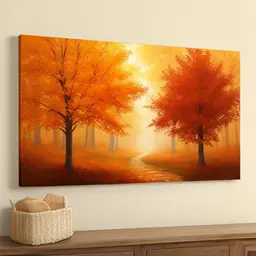
Description of Common Material for High-Quality Wall Art High-quality wall art is often observed through the exceptional materials utilized. This may include superior-quality, archival-grade canvas for exquisite prints and original paintings, handmade papers for delicate watercolors or prints, high-grade ink for saturated and lasting hues, wood or metal for sculptural pieces, or even fine silk for traditional tapestries. Additionally, mounting and framing materials - acid-free mat boards, wooden or metal frames, and UV-protective glass help to preserve these works, enhancing their longevity and aesthetic appeal.
The Significance of Craftsmanship in Wall Art Craftsmanship denotes more than just a well-made piece; it speaks of the artist's expertise and the time and skill invested into the work. The precision and dedication in high-quality wall art can contribute a unique aura and commanding presence to the decor, be it through meticulously painted details or the elegant patina on a sculpture.
Evaluation of Design Elements: Color, Texture, Form, Line Design elements significantly shape the visual impact of a wall art piece. The interplay of colors can dramatically influence moods and perceptions. Texture, both visual and tactile, adds depth and interest to the art, making it more engaging. Form and line contribute to the composition and balance of the piece, guiding the viewer's eye across the artwork, creating rhythm, and imparting a sense of movement.
Exploring the Versatility of Themes in Wall Art The theme generally concerns the subject matter or the conceptual thrust of an artwork. Walls can be adorned with a spectrum of themes - nature, abstract, portraiture, landscapes, or even pop-culture references. This versatility allows wall art to be perfectly suited to any interior style, taste, or atmosphere.
Understanding the Importance of Preservation and Maintenance Preservation is integral to maintaining high-quality wall art, extending its lifespan, and preventing damage. This includes ensuring protection from external damaging factors such as sunlight, moisture, or dust. Routine cleaning and maintenance can also safeguard the art from common issues like fading or discoloration.
Discussion about Archival quality and Fade-resistant Material Archival quality refers to materials that have been manufactured to resist deterioration over time. These art pieces often use fade-resistant inks, acid-free materials, and UV-protective coatings, making them more resistant to environmental factors. This quality, paired with the correct care, can ensure wall art retains its vibrancy and condition for generations.
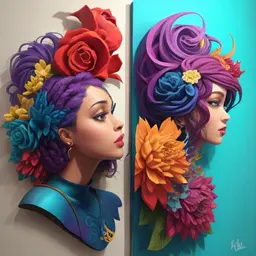
While aesthetics largely drives the choice of wall art, its practical role cannot be discounted. High-quality wall art, along with being a visual delight, can serve functional purposes. It can correct color imbalances, highlight specific features, cover architectural flaws, or add depth to a small room. The aim is to strike a balance, where aesthetics and functionality complement each other to create an overall harmonious look.
Colors and patterns in wall art strongly influence our emotions and mind. Bright colors such as yellow and orange can invigorate and stimulate, while cooler tones like blue and green can soothe and calm. Intricate patterns can serve to captivate our attention, while simplistic ones can bring a sense of order. Therefore, understanding their psychological impact can aid in selecting wall art that fosters the desired ambiance - be it a vibrant living room or a peaceful bedroom.
The size, positioning, and layout of the wall art are key factors that affect both aesthetics and practicality. The size of the art should correspond to the available wall space without overwhelming other design elements. The positioning at eye level typically offers the best view. The layout of multiple pieces, if displayed together, should be cohesive and balanced, further enhancing the decorative effect. When thoughtfully planned, these aspects can greatly contribute to the creation of a pleasing visual narrative within the interior space.

Reproductions allow art lovers to possess celebrated works without the hefty price tag. Masterpieces from artists like Van Gogh, Monet, or Picasso come to life on superior-quality canvas or fine art paper. These reproductions, despite being duplicates, maintain a high level of accuracy, color richness, and detail, adding aesthetic value to any room.
Museum-quality prints, often known as giclée prints, provide the closest representation of original work. They are created with high-resolution digital scans and archival grade inks ensuring a superior level of precision and long-lasting color. Limited edition prints might also include a certificate of authenticity, offering a sense of exclusivity.
Original paintings and drawings offer the unique allure of authenticity – the chance to own a piece of the artist's creative journey, complete with texture and strokes that a print cannot replicate. They come in diverse styles, mediums and techniques, ranging from oil, acrylic, watercolor to charcoal, pastel or graphite, adding an original and personal touch to your decor.
Sculptural wall art imparts dimensionality to the room, creating interesting shadow play and depth. Whether abstract or realistic, these three-dimensional pieces, crafted from metal, wood, ceramic, or even recycled materials, offer a captivating visual experience from every angle.
The digital realm provides cutting-edge possibilities for wall art. Digital art displays can showcase a rotating gallery of art or photography that adapts to the mood or occasion. Interactive wall art stimulates engagement, where viewers can affect the artwork's visual output through touch or motion sensors, turning the static wall into a dynamic landscape.
In choosing high-quality wall art, the diversity of options allows every artistic preference to find a home, from classical enthusiasts to avant-garde lovers, from connoisseurs of the original to admirers of the digital.
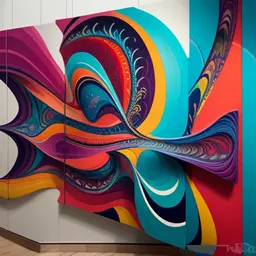
Choosing high-quality wall art begins with assessing your space. Consider the size of the wall, the color palette of the room, and the style of your existing decor. Ask yourself - do you want an artwork that blends in harmoniously or one that creates a striking contrast? Your requirements are not only dictated by aesthetics but also by room functionality - a delicate silk tapestry might not be apt for a high-humidity bathroom, for instance. Personal preferences and the desired emotional impact of the piece are also crucial.
Evaluating the quality of an artwork can be subjective. Besides personal taste, consider attributes like color vibrancy, precision of details, the complexity of design, the texture of brushstrokes, or the harmony of composition. When buying prints or reproductions, look for archival-quality materials and fade-resistant inks to ensure longevity. If the piece includes a frame, check for the quality of the frame and glass too. For original artworks, knowing the artist and his/her reputation can also assuage doubts about quality.
When it comes to buying high-quality wall art, there are several avenues available. Traditional galleries and art shows provide the opportunity to view the artwork in person allowing you to examine the quality closely. They often also provide provenance documentation, ensuring the authenticity of the art.
Online platforms are excellent for a vast range of choices across various price brackets. Reputable online art platforms ensure quality through strict curation policies. They provide all necessary details - high-resolution images, complete specifications, artist information, and customer reviews - to aid informed decision making.
Regardless of where you buy, professional guidance from an art consultant or interior decorator can be valuable to navigate through the process and make the right choice. Remember, investing in high-quality wall art is not just about buying a piece of decoration; it’s about acquiring something that resonates with you, enriches your space, and potentially appreciates in value over time.
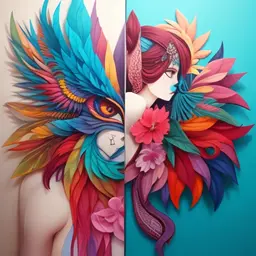
Positioning plays a crucial role in achieving the desired visual impact. Typically, the center of the artwork should be at eye level, around 57 to 60 inches from the floor. However, this may vary depending upon the room's layout and furniture position. In case of large wall spaces or high ceilings, the artwork can be positioned higher to maintain visual balance. Think about sightlines from different perspectives in the room and how the artwork interacts with other elements of the room such as lighting, color palette, and furnishings.
When arranging multiple pieces of art, consider the space as a whole. Form a unity in terms of balanced lines, shapes, colors, or themes. Groupings can be made symmetrically, asymmetrically, column style, or in a gallery wall arrangement for a more eclectic display. Remember to leave sufficient breathing space between each piece while maintaining an element of cohesion. Always plan your layout before hanging, experimenting with different arrangements until you find the one that feels right.
While displaying wall art, safety is of paramount importance. Make sure the hooks, nails, or mounting systems are secure and can withstand the weight of the artwork. Framed artwork should be hung using picture wire attached to the frame, rather than the frame itself, to distribute weight evenly. In areas of high traffic or where it might be accidentally knocked, ensure there is sufficient clearance. In earthquake-prone areas, additional security may be needed, such as earthquake hooks. Regular checks for any signs of damage or instability are also recommended.
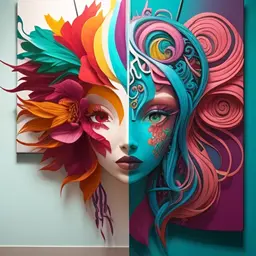
Maintaining the condition of wall art contributes to its longevity. Dust it lightly using a soft, non-abrasive cloth or a feather duster. In case of grime or dirt build-up, consult with a professional conservator before using any cleaning agents. Keep wall art away from direct sunlight, which can cause the colors to fade, and from sources of extreme heat, cold, or moisture, which can damage the materials. Rotate your artworks periodically, especially if they’re in high light exposure areas to prevent fading or discoloration.
When handling wall art, use clean hands or wear cotton gloves to prevent oil and dirt from damaging the piece. Hold a framed piece from both sides of the frame; never lift it from the top of the frame or the wire. In case of storage, ensure the area is dry, clean, and temperature-controlled. Cover the artwork with a breathable material, like a cotton sheet, to prevent dust accumulation whilst allowing air circulation. Stack framed pieces vertically, similar to books, or place them on blocks to keep them off the floor.
Preservation and conservation are essential for keeping your wall artwork in its best form. If signs of damage or aging occur, professional art conservators should be consulted. They can provide measures to retard degradation and restore any incurred damage. For precious or antique pieces, consider UV-filtering glazing and acid-free mats to ward off potential harm. Regular assessments of the artwork's condition, particularly for early detection of issues like pest infestations, mold, or color shifts, are recommended.
Remember, careful attention and appropriate care of wall art not only maintains its quality but also your long-term enjoyment of the piece.